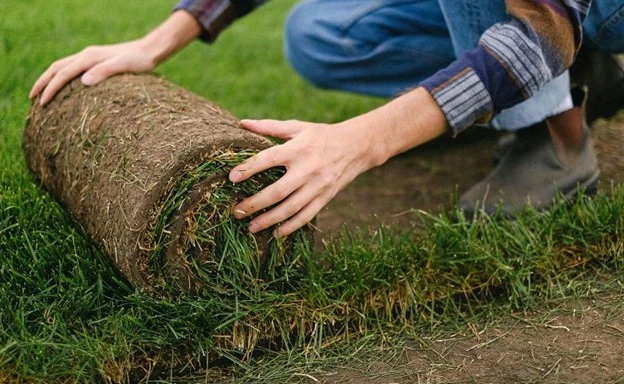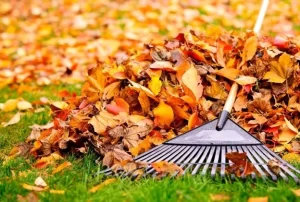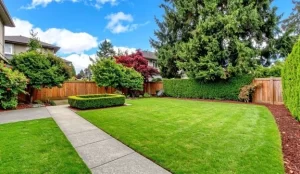Choosing the right lawn covering is a significant decision for homeowners and property managers alike. Options like artificial turf installation or natural sod not only affect the appearance and usability of your outdoor space but also impact your budget, maintenance routine, and environmental footprint.
Whether you’re designing a backyard retreat, a functional play area, or a commercial landscape, selecting between artificial turf and natural sod requires careful thought and consideration of both short- and long-term needs.

Artificial turf and natural sod each offer unique advantages and potential drawbacks. Natural sod delivers a traditional, lush green look and contributes to the local ecosystem by producing oxygen and absorbing heat.
However, it demands consistent watering, mowing, fertilization, and seasonal upkeep. In contrast, artificial turf installation provides a low-maintenance, evergreen alternative that can withstand heavy use and drought conditions, though it comes with higher upfront costs and environmental considerations, such as heat retention and limited biodegradability.
To make an informed choice, it’s essential to weigh factors like initial installation cost, long-term maintenance, durability, and environmental impact. While sod may be more affordable upfront, the ongoing care can add up over time. Turf, on the other hand, may offer cost savings and convenience in the long run. This article explores these key differences in depth to help you determine which option is the smarter, more sustainable long-term investment for your property.
Understanding Artificial Turf Installation and Sod
Artificial turf installation uses a synthetic surface made from plastic fibers designed to mimic natural grass. It is installed over a prepared base and requires minimal upkeep once in place. Sod, on the other hand, consists of real grass grown on farms, harvested in sections, and laid down to create an instant lawn. Sod requires ongoing care such as watering, mowing, and fertilizing to maintain its health and appearance.
Initial Installation Costs
One of the most immediate considerations is the upfront cost of installation.
- Sod installation is generally more affordable initially. Material costs typically range (national average) from $0.30 to $0.85 per square foot, with installation adding $1 to $2 per square foot, depending on the quality and type of grass. However, sod installation often requires soil preparation and irrigation setup, which can add to the initial expense.
- Artificial turf installation has a higher upfront price, commonly between $8 and $20 per square foot, inclusive of materials, base preparation, and professional installation. This higher cost reflects the manufacturing of synthetic fibers, specialized installation, and the durable base needed for longevity.
Summary: Sod wins on initial cost, making it attractive for those with budget constraints or smaller projects. Artificial turf demands a larger initial investment but offers benefits that can offset this over time.
Maintenance and Ongoing Costs
The long-term financial impact of your lawn choice is largely driven by maintenance requirements.
- Sod demands regular watering, mowing, fertilizing, and weed control. In many regions, especially drought-prone areas, watering can be a significant ongoing expense. Additionally, sod may need periodic reseeding or patching due to wear, pests, or weather damage.
- Artificial turf installation requires minimal maintenance. There is no need for mowing, watering, fertilizing, or pesticide use. Occasional cleaning and brushing, especially in pet areas, are typically sufficient to keep it looking good. This translates into considerable savings on water bills, lawn care equipment, and landscaping services.
Summary: Artificial turf offers substantial savings on maintenance costs and time, making it a cost-effective option over the long haul despite its higher upfront price.
Water Usage and Environmental Considerations
Water conservation is a critical factor, especially in areas facing drought or water restrictions.
- Sod lawns consume large volumes of water. For example, natural grass in arid climates like Phoenix can require over 55,000 gallons per 1,000 square feet annually. This not only raises water bills but also places strain on local water resources.
- Artificial turf installation requires virtually no water, aside from occasional rinsing to cool the surface or clean debris. This makes it an environmentally friendly choice in terms of water conservation.
However, there are trade-offs:
- Natural grass contributes positively to the environment by producing oxygen, cooling the air through transpiration, filtering pollutants, and preventing soil erosion.
- Artificial turf, while saving water and chemicals, is made from plastic materials and may contribute to microplastic pollution unless recycled or reused turf options are chosen.
Summary: Artificial turf excels in water conservation, while sod offers ecological benefits that synthetic options cannot replicate.
Durability and Longevity of Sod vs. Artificial Turf Installation
How long your lawn lasts and how it withstands wear and weather is vital for long-term investment.
- Sod typically lasts around 10 years with diligent maintenance but is vulnerable to damage from pests, diseases, foot traffic, and extreme weather conditions.
- Artificial turf installation can last 15 to 20 years or more with minimal upkeep. High-quality turf is UV-resistant, durable against heavy foot traffic, and pet-friendly.
Summary: Artificial turf installation generally outperforms sod in durability and longevity, reducing the need for frequent replacement or repairs.
Aesthetic Appeal and Feel
The look and feel of your lawn can influence your satisfaction and property value.
- Sod provides a natural, lush appearance and the authentic feel of living grass underfoot. This natural aesthetic is difficult to replicate perfectly with synthetic materials.
- Artificial turf installation offers a consistent, green look year-round but may appear artificial to some. Advances in turf technology have improved its realism, but some homeowners still prefer the natural variation and softness of real grass.
Summary: Sod wins on natural aesthetics and tactile experience, though artificial turf installation has improved significantly in mimicking these qualities.
Installation Process and Timeframe
- Sod installation is relatively quick and can transform a yard instantly. However, sod must be installed soon after harvesting (within 24-48 hours) and requires time to root and establish, during which care is critical.
- Artificial turf installation involves base preparation, weed barrier installation, turf laying, and infill application. The process can take several days but results in an immediately usable lawn without the establishment period needed for sod.
Environmental Impact Summary
When comparing sod and artificial turf installation, it’s important to look at how each option affects water use, chemicals, carbon footprint, and soil health.
|
Aspect |
Sod (Natural Grass) |
Artificial Turf |
|
Water Usage |
High, especially in dry climates |
Minimal to none |
|
Chemical Use |
Fertilizers, pesticides may be needed |
None required |
|
Carbon Footprint |
Absorbs CO2, produces oxygen |
Made from plastics, potential microplastics |
|
Heat Retention |
Cools environment via transpiration |
Can get hot in direct sun, may require cooling |
|
Soil Health |
Supports soil ecosystem and prevents erosion |
No soil benefits |
Both sod and artificial turf installation carry trade-offs: sod contributes to the natural ecosystem, while turf reduces water use and eliminates chemical treatments but may raise concerns about heat and plastics.
Which Is the Better Long-Term Investment?
Artificial Turf Advantages:
- Higher upfront cost but lower lifetime maintenance expenses.
- Significant water savings, ideal for drought-prone or water-restricted areas.
- Durable and long-lasting, withstanding heavy use and harsh weather.
- Consistent appearance year-round with minimal effort.
- Reduced need for fertilizers, pesticides, and lawn equipment.
Sod Advantages:
- Lower initial installation cost.
- Natural look, feel, and environmental benefits.
- Supports local ecosystems and soil health.
- Provides cooling effects and air purification.
Considerations:
- If your priority is minimizing maintenance, water use, and long-term costs—especially in arid climates—artificial turf installation is often the stronger investment
- If you value natural aesthetics, environmental benefits, and are willing to invest time and resources in upkeep, sod may be preferable.
- Budget constraints and personal preferences regarding lawn feel and appearance will also influence the decision.
Conclusion: Choosing Between Sod and Artificial Turf Installation
Both artificial turf and sod have their merits and drawbacks, but when viewed through the lens of long-term investment, artificial turf generally offers better financial and practical returns over time. Its durability, low maintenance, and water-saving benefits make it especially attractive for homeowners seeking a hassle-free, sustainable lawn solution.
Conversely, sod provides the unmatched beauty and environmental advantages of living grass, appealing to those who prioritize natural landscapes and are prepared for ongoing care.
Ultimately, the best choice depends on your climate, budget, lifestyle, and environmental values. Armed with this knowledge, you can confidently select the lawn option that aligns with your long-term goals and enjoy a beautiful, functional outdoor space for years to come.
Hawkins Landscaping Inc. has been a trusted name in landscape design and installation for years, offering expert services in both artificial turf installation and natural sod laying. Known for quality craftsmanship and attention to detail, our team works closely with homeowners and property managers to create vibrant, lasting landscapes tailored to your unique needs. Whether you’re looking for a low-maintenance lawn alternative or a lush, natural yard, we have the tools, experience, and passion to bring your vision to life. Proudly serving Frederick County and surrounding areas, Hawkins Landscaping is committed to enhancing your outdoor space with professionalism and care. Call us today at (301) 898-3615 or visit www.hawkinslandscaping.com to schedule your consultation. Let us help you transform your lawn into something truly exceptional.




